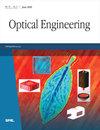Lensless 3D-imaging by referenceless phase holography
IF 1.2
4区 工程技术
Q4 OPTICS
引用次数: 0
Abstract
Referenceless phase holography (RELPH) is a lensless holographic method that generates the full (amplitude and phase) optical field if intensity and phase distributions of this field in one plane are given as numerical data. It is based on the interference of two pure phase fields that are produced by reflection of two mutually coherent plane waves at two phase modulating spatial light modulators (SLM). The optical field of any real or artificial three-dimensional (3D) scene can be displayed. This means that referenceless phase holography is a promising method for future 3D television or 3D cinema as well as for interferometric metrology. We introduce the theory of RELPH, possible technical realizations, and discuss the numerics. The possibilities and problems in calculating the diffraction fields of given 3D scenes are worked out, modifications of the algorithms are presented. Experiments are shown, not only proving the practicability of RELPH, but also confirming the various 3D cues, such as depth of field, occlusion, and parallax. Two approaches to multicolor display are presented and experimentally verified. The benefits and advantages of RELPH are outlined, open problems and necessary technological developments as well as possibilities and future prospects are discussed.通过无参照相位全息技术实现无透镜三维成像
无参相位全息(RELPH)是一种无透镜全息方法,如果将一个平面上的光场强度和相位分布作为数字数据给出,就能生成完整的(振幅和相位)光场。它基于两个相干平面波在两个相位调制空间光调制器(SLM)上反射产生的两个纯相位场的干涉。可以显示任何真实或人造三维(3D)场景的光场。这意味着无参照相位全息技术是未来三维电视或三维电影以及干涉计量学的一种有前途的方法。我们介绍了 RELPH 的理论、可能的技术实现方法,并讨论了数值计算。我们探讨了计算给定三维场景衍射场的可能性和问题,并介绍了算法的修改。实验结果不仅证明了 RELPH 的实用性,还证实了各种三维线索,如景深、遮挡和视差。介绍了两种多色显示方法,并通过实验进行了验证。概述了 RELPH 的好处和优势,讨论了尚未解决的问题和必要的技术开发以及可能性和未来前景。
本文章由计算机程序翻译,如有差异,请以英文原文为准。
求助全文
约1分钟内获得全文
求助全文
来源期刊

Optical Engineering
工程技术-光学
CiteScore
2.70
自引率
7.70%
发文量
393
审稿时长
2.6 months
期刊介绍:
Optical Engineering publishes peer-reviewed papers reporting on research and development in optical science and engineering and the practical applications of known optical science, engineering, and technology.
 求助内容:
求助内容: 应助结果提醒方式:
应助结果提醒方式:


